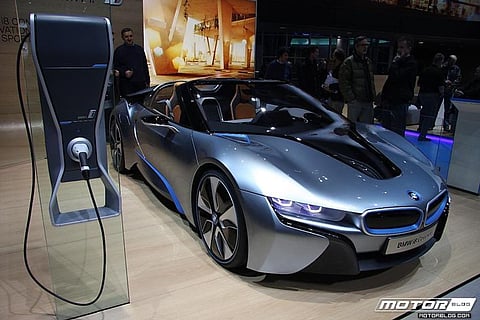
- Home
- न्यूजग्राम
- NewsGram USA
- India
- World
- Politics
- Entertainment
- Culture
- Lifestyle
- Economy
- Sports
- Sp. Coverage
- Misc.
- NewsGram Exclusive
- Jobs / Internships

Sales of vehicles and automotive parts continue to increase in India. And just last year, the country saw at least four million cars sold. For a country touted to be one of the largest automotive industries in the Asia-Pacific region, the numbers only show a potential upward swing.
India saw the sale of 4 million vehicles last year.At the very least, we can expect both motorists and automotive companies to have confidence in the future on account of robust sales figures. Industry projections also provide reasons to feel elated. For one, the industry is set to grow at a pace of 10 to 15 percent. Given the right conditions and institutional support, it is set to reach a value of $16.5 billion by 2021.
Despite these positive figures, however, it is important to recognize the factors that will either bring new innovations to the table or worsen current challenges.
Here are some of the most important trends to watch out for this year.
Low-cost labor
India is indeed a haven for international car companies seeking to establish assembly lines at low costs. The availability of skilled labor and, with that, low wages will continue to play a vital role in improving annual production rates. China is the powerhouse for now, but local car manufacturers in India are maximizing the current labor climate in a bid to outrank its oriental neighbor.
Research and Development of features like fuel efficiency will be one of the main trends.
Focus on research and development
Safety and environmental concerns continue to be a priority among international car manufacturers. Consumers are still reeling from the serious recalls Toyota had to implement in response to factory defects. The experience created an atmosphere of caution, where buyers have become more focused on ensuring their own safety on the road. Design and manufacturing have thus skewed more towards ensuring better airbag systems, quality assessment procedures and environmental compliance.
Ventures with other companies
Innovations and technological shifts are a given, but it remains crucial for manufacturers to forge stronger relationships with OEM and tier partners such as machining services, AC parts suppliers, and windshield installations. However, due to incessant innovations, suppliers will have to update existing technologies or undergo acquisitions by larger OEMs where the sharing of vital resources of knowledge is very much possible.
Also Read: Electric Cars: The Newest Trend In India
Reliance on digital marketing
As with previous years, manufacturers and dealerships will continue to adapt to current digital trends. In terms of distribution, using online platforms can actually help in saving costs by selling directly to buyers, hence bypassing retailers. What's more, using their online brand presence, car manufacturers can do better market research and outreach activities, allowing them to shorten the time it takes before buyers can make their decisions.
Digital marketing will potentially increase the sales of cars. Wikimedia Commons
Focus on reforms
In a 2017 blog article by Priyam Saraf for The World Bank, policy reforms in the country are crucial for enhancing India's competitiveness. Investments in research and development should also go hand in hand with reduction of tariffs as a way towards lessening the pressures on the automotive industry. More importantly, measures for improving compliance to global standards can further strengthen the industry's performance in the face of rising competition that lies close to home.
